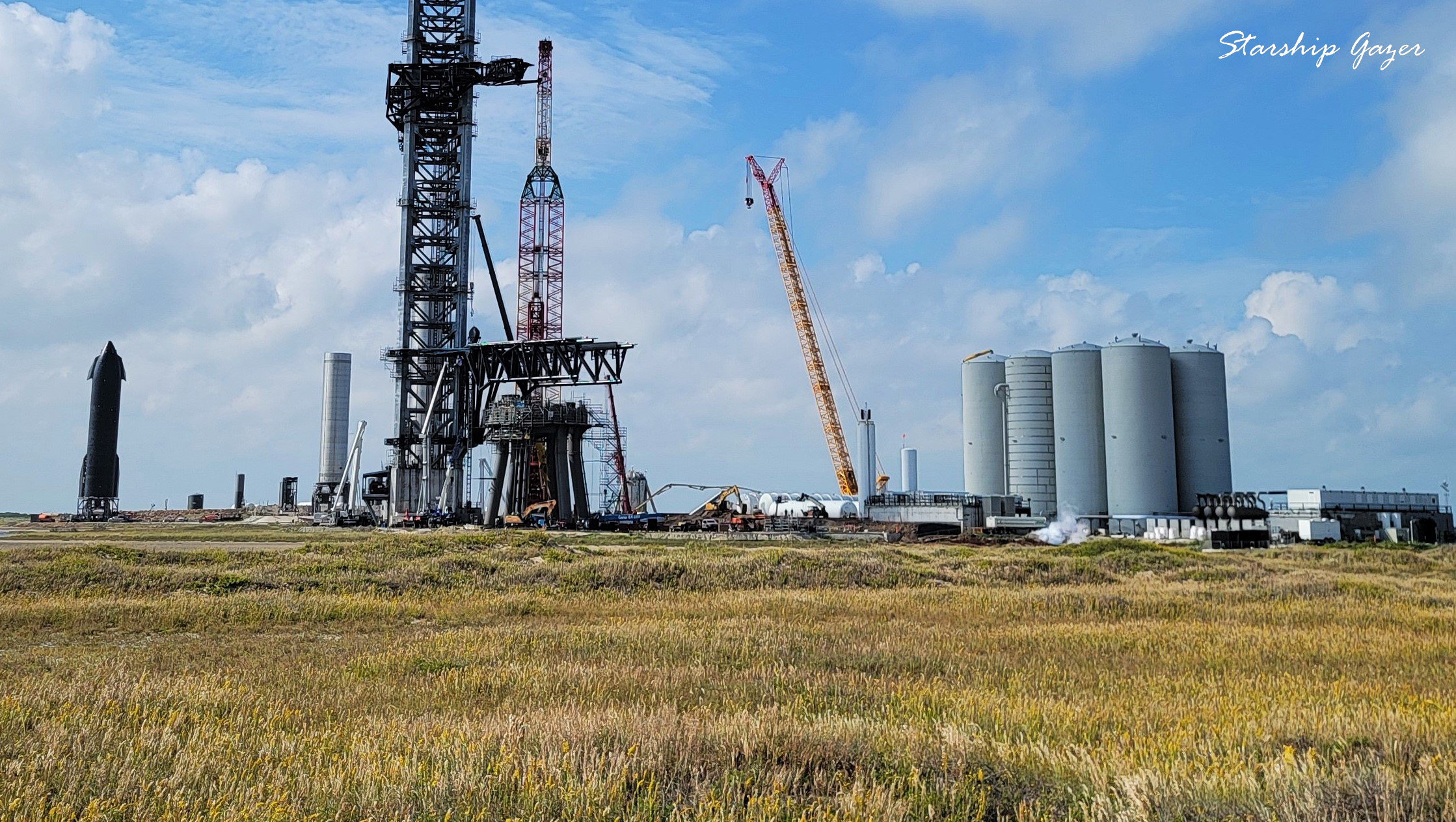
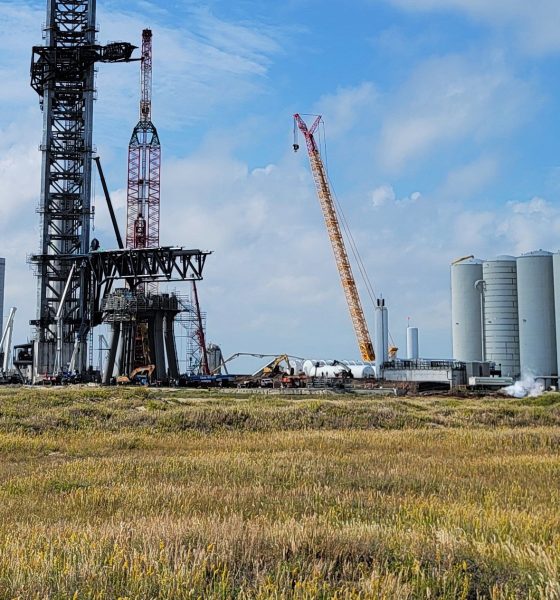
News
SpaceX begins filling Starship’s orbital launch site with rocket propellant
Less than a year after tank farm assembly began in South Texas, SpaceX has begun the painstaking process of filling Starship’s first orbital launch site with thousands of tons of rocket propellant.
Comprised of seven giant custom-built tanks, the last of which SpaceX installed and ‘sleeved’ in mid-October, Starbase’s first orbital-class tank farm is a bit like the pad’s circulatory system and needs to store, chill, and distribute all the propellant needed for a rocket launch. To support Starship and Super Heavy, both the largest individual rocket stages and the largest integrated rocket ever built, its launch site and tank farm have to be equally immense. In classic SpaceX fashion, the company has strived to keep the costs of that tank farm low and its speed of construction high, resulting in a setup that’s fairly unique as far as launch pads go.
Perhaps nothing emphasizes the scale of Starship’s first orbital-class tank farm than the process of filling it with the supercool propellant and fluids its designed to hold.
In mid-September, SpaceX began delivering cryogenic fluids to Starbase’s orbital tank farm for the first time ever. Instead of propellant, dozens of tanker trucks delivered liquid nitrogen to one or two of the farm’s tanks between mid-September and mid-October. Altogether, around 40-60 truckloads was delivered – only enough to partially fill one tank. That liquid nitrogen also appeared to be piped into two of the farm’s three liquid oxygen tanks, meaning that it may have only been used to clean and proof test them.
Combined, the farm’s seven main tanks should be able to store roughly 2400 tons (5.3M lb) of liquid methane (LCH4), 5400 tons (12M lb) of liquid oxygen (LOx), and 2600 tons (5.7M lb) of liquid nitrogen (LN2). LCH4 and LOx are Starship’s propellant, while LN2 is needed to ‘subcool’ that propellant below its boiling point, significantly increasing its density and the mass of propellant Starships can store.
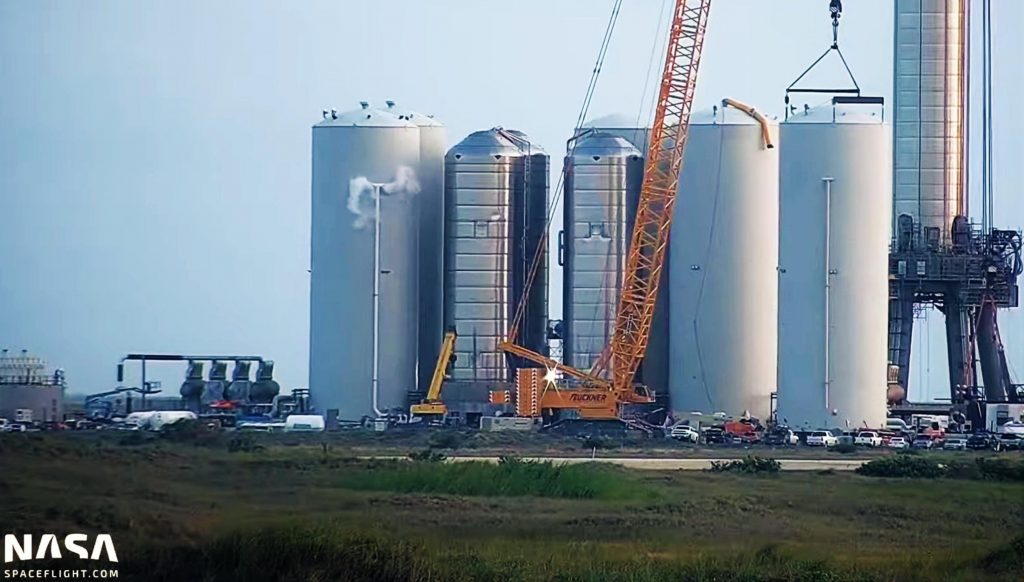
In recent weeks, LN2 deliveries have picked back up at the orbital tank farm, suggesting that more tanks are being cleaned and proofed. SpaceX may have also begun filling one or both of the farm’s dedicated LN2 tanks, though it’s hard to say for sure. More importantly, around October 17th, SpaceX began filling Starship’s orbital tank farm with liquid oxygen – real propellant – for the first time. Rather than a slow and cautious process, deliveries have streamed in almost daily ever since. As of November 4th, at least 74 tanker trucks have delivered LOx to the farm in 18 days.
Based on Department of Transportation (DOT) regulations that limit the gross weight of cryogenic tanker trucks to about 37 tons (~81,000 lb), each of those trucks has likely delivered around 20 tons (~45,000 lb) of LOx to Starbase. Altogether, that amounts to around 1500 tons (3.3M lb) delivered in less than three weeks – enough to fill about 80% of one of the farm’s three LOx tanks or a quarter of its total LOx storage capacity.
Based on data from AI-based tracker Starbase Deliveries, which can only count daytime deliveries, at least 134 tankers have delivered LCH4, LOx, or LN2 to Starbase’s orbital and suborbital launch sites between October 4th and November 4th – an average of 4.3 per day. At that rate, even if every delivery went to the orbital pad, it would take SpaceX nearly four months just to fill the orbital tank farm. Put simply, the facilities and logistics required to support even a single orbital Starship launch are gargantuan.

News
Tesla Diner to transition to full-service restaurant as Chef heads for new venture
“I am leaving the Tesla Diner project to focus on the opening of Mish, my long-desired Jewish deli. Projects like Mish and the Tesla Diner require a sharpness of focus and attention, and my focus and attention is now squarely on Mish.”
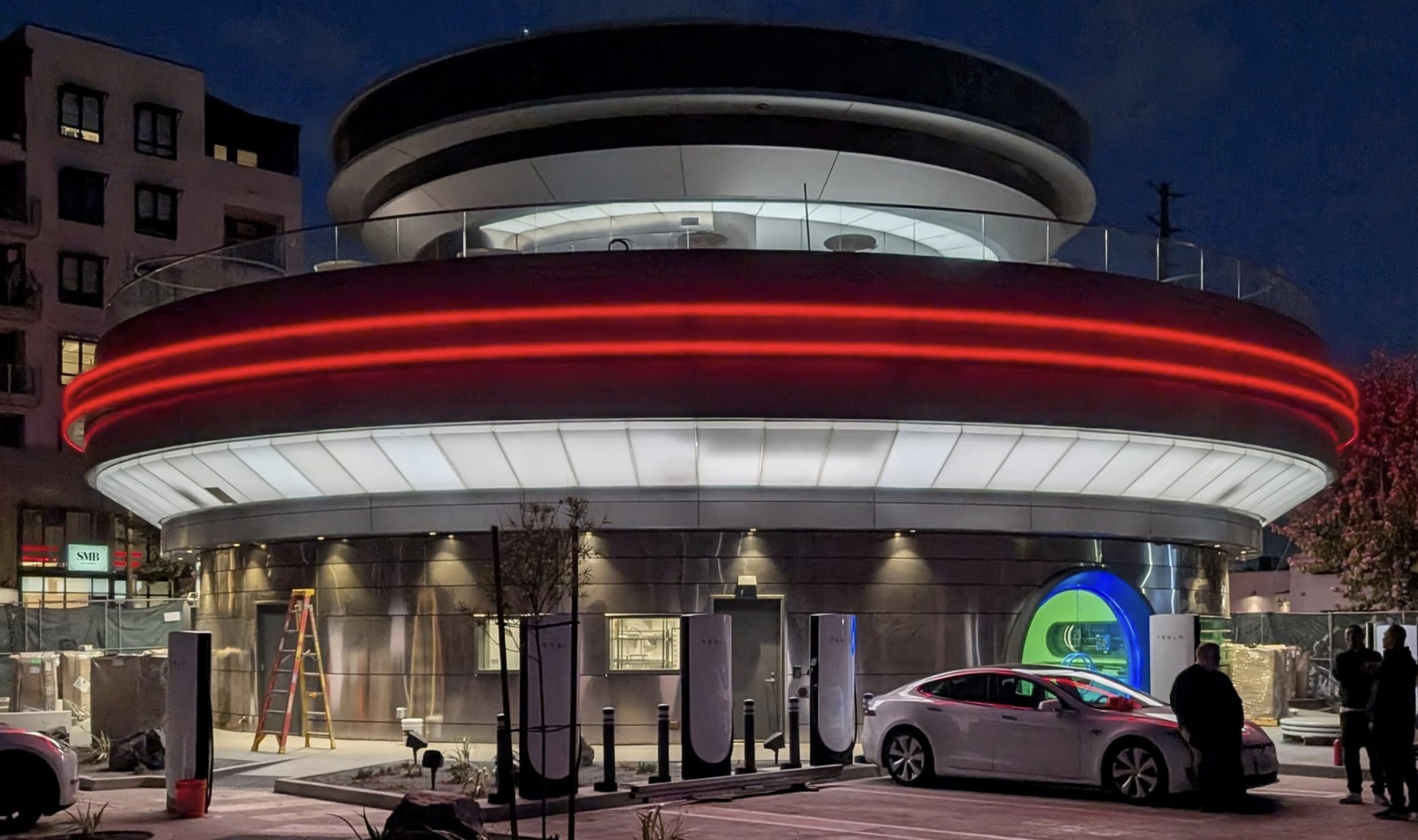
Tesla Diner, the all-in-one Supercharging and dining experience located in Los Angeles, will transition to a full-service restaurant in January, staff said, as Chef Eric Greenspan said he would take on a new project.
A report from the Los Angeles Times says Greenspan confirmed through a text that he would leave the Diner and focus on the opening of his new Jewish deli, Mish.
Greenspan confirmed to the paper:
“I am leaving the Tesla Diner project to focus on the opening of Mish, my long-desired Jewish deli. Projects like Mish and the Tesla Diner require a sharpness of focus and attention, and my focus and attention is now squarely on Mish.”
Greenspan took on the job at the Tesla Diner and curated the menu back in March, focusing on locally-sourced ingredients and items that would play on various company products, like Cybertruck-shaped boxes that hold burgers.
Tesla Cybertruck leftovers are the main course at the Supercharger Diner
The Tesla Diner has operated as somewhat of a self-serve establishment, where Tesla owners can order directly from their vehicles through the center touchscreen. It was not exclusive to Tesla owners. Guests could also enter and order at a counter, and pick up their food, before sitting at a booth or table.
However, the report indicates Tesla is planning to push it toward a sit-down restaurant, full of waiters, waitresses, and servers, all of which will come to a table after you are seated, take your order, and serve your food.
It will be more of a full-featured restaurant experience moving forward, which is an interesting move from the company, but it also sounds as if it could be testing for an expansion.
We know that Tesla is already considering expanding locations, as it will be heading to new areas of the country. CEO Elon Musk has said that Tesla will be considering locations in Palo Alto near the company’s Engineering HQ, and in Austin, where its HQ and Gigafactory Texas are located.
Musk said that the Diner has been very successful in its first few months of operation.
News
Tesla adds new surprising fee to Robotaxi program
“Additional cleaning was required for the vehicle after your trip. A fee has been added to your final cost to cover this service. Please contact us if you have any questions.”
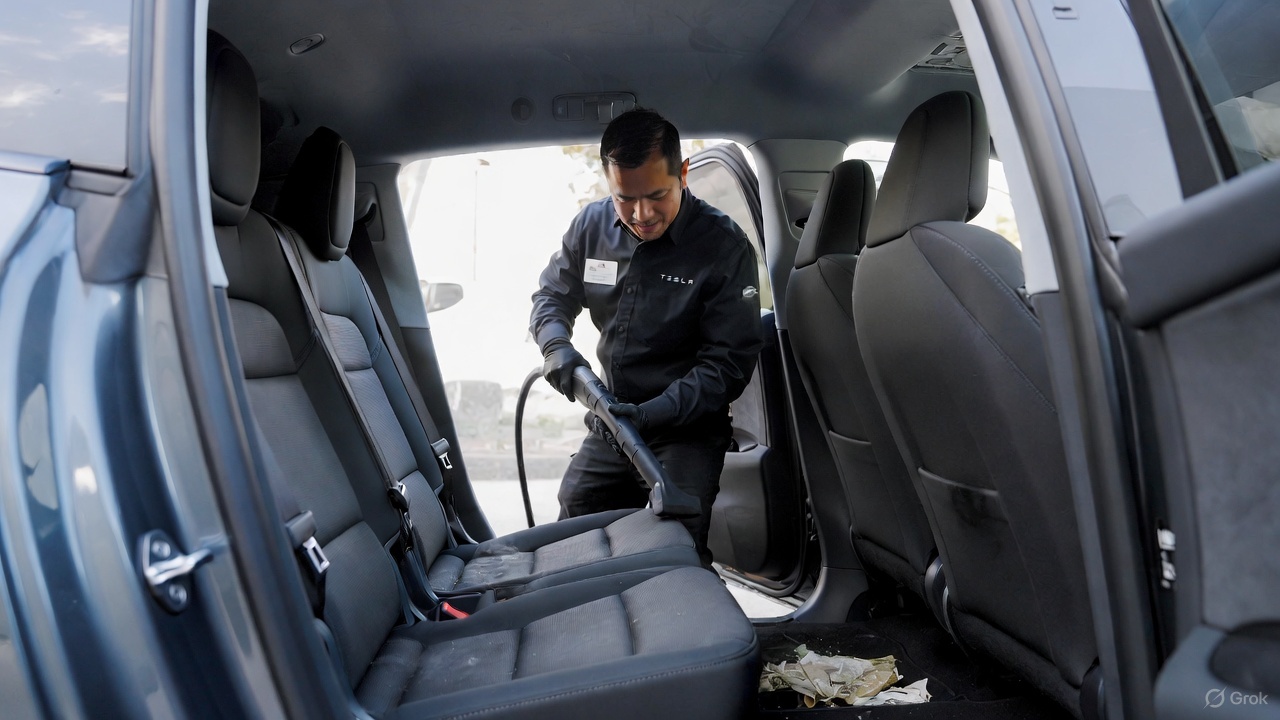
Tesla has added a new and somewhat surprising fee to the Robotaxi program. It’s only surprising because it was never there before.
Tesla shocked everyone when it launched its Robotaxi platform and offered riders the opportunity to tip, only to tell them they do not accept tips. It was one of the company’s attempts at being humorous as it rolled out its driverless platform to people in Austin.
As it has expanded to new cities and been opened to more people, as it was yesterday to iOS users, Tesla has had to tweak some of the minor details of the Robotaxi and ride-hailing platforms it operates.
First Look at Tesla’s Robotaxi App: features, design, and more
With more riders, more vehicles, and more operational jurisdictions, the company has to adjust as things become busier.
Now, it is adjusting the platform by adding “Cleaning Fees” to the Robotaxi platform, but it seems it is only charged if the vehicle requires some additional attention after your ride.
The app will communicate with the rider with the following message (via Not a Tesla App):
“Additional cleaning was required for the vehicle after your trip. A fee has been added to your final cost to cover this service. Please contact us if you have any questions.”
The cost of the cleaning will likely depend on how severe the mess is. If you spill a soda, it will likely cost less than if you lose your lunch in the back of the car because you had a few too many drinks.
This is an expected change, and it seems to be one that is needed, especially considering Tesla is operating a small-scale ride-hailing service at the current time. As it expands to more states and cities and eventually is available everywhere, there will be more situations that will arise.
The messes in vehicles are not a new situation, especially in a rideshare setting. It will be interesting to see if Tesla will enable other fees, like ones for riders who request a ride and do not show up for it.
News
Tesla Model Y sold out in China for 2025
Customers who wish to get their cars by the end of the year would likely need to get an inventory unit.
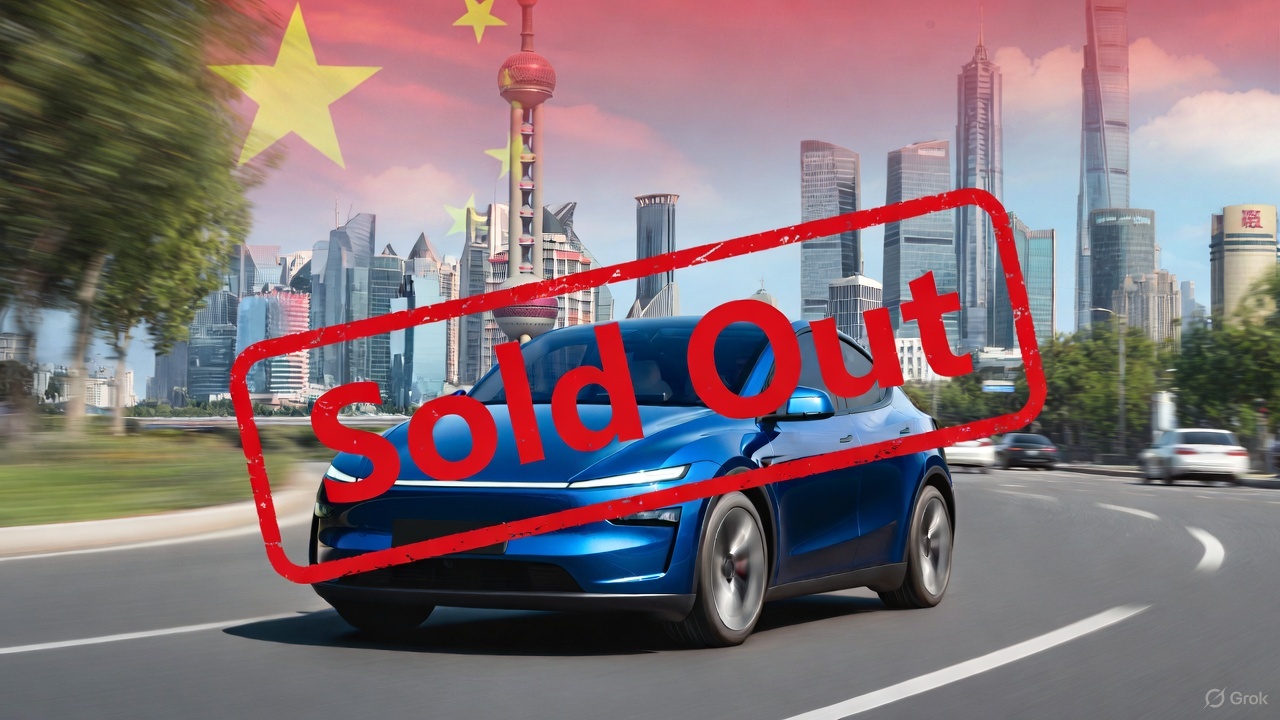
It appears that the Model Y has been sold out for 2025 in China. This seems to be true for the four variants of the vehicle that are currently offered in the country.
Tesla China’s order page update
A look at Tesla China’s order page for the Model Y shows a message informing customers that those who wish to guarantee delivery by the end of the year should purchase an inventory unit. This was despite the Model Y RWD and Model Y L showing an estimated delivery timeline of 4-8 weeks, and the Model Y Long Range RWD and Model Y Long Range AWD showing 4-13 weeks.
As per industry watchers, these updates on the Model Y’s order page suggest that Tesla China’s sales capacity for the remainder of 2025 has been sold out. The fact that estimated delivery timeframes for the Model Y Long Range RWD and AWD extend up to 13 weeks also bodes well for demand for the vehicle, especially given strong rivals like the Xiaomi YU7, which undercuts the Model Y in price.
Tesla China’s upcoming big updates
What is quite interesting is that Tesla China is still competing in the country with one hand partly tied behind its back. So far, Tesla has only been able to secure partial approval for its flagship self-driving software, FSD, in China. This has resulted in V14 not being rolled out to the country yet. Despite this, Tesla China’s “Autopilot automatic assisted driving on urban roads,” as the system is called locally, has earned positive reviews from users.
As per Elon Musk during the 2025 Annual Shareholder Meeting, however, Tesla is expecting to secure full approval for FSD in China in early 2026. “We have partial approval in China, and we hopefully will have full approval in China around February or March or so. That’s what they’ve told us,” Musk said.








